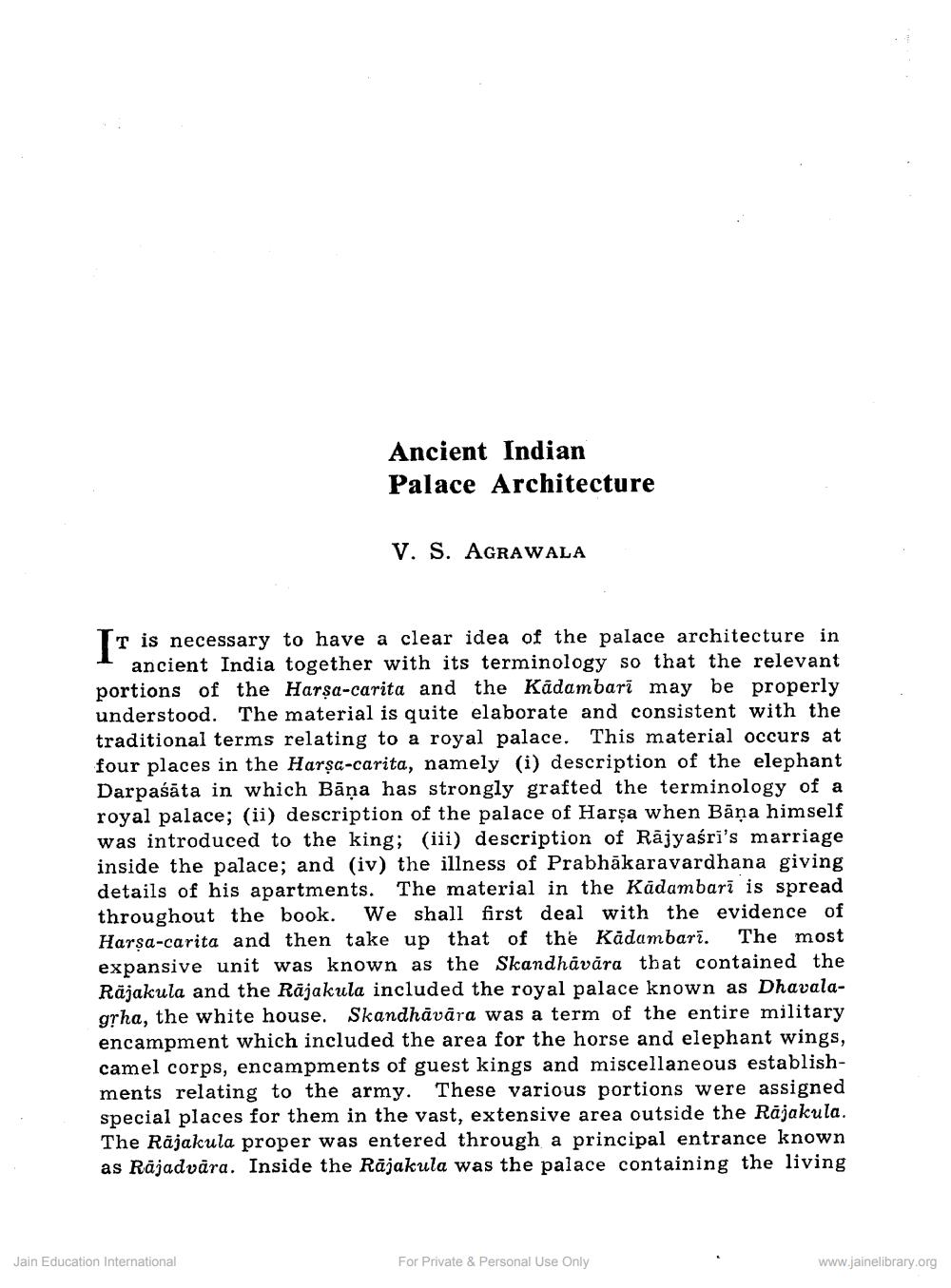Book Title: Ancient Indian Palace Architecture Author(s): V S Agarwala Publisher: Z_Mahavir_Jain_Vidyalay_Suvarna_Mahotsav_Granth_Part_1_012002.pdf and Mahavir_Jain_Vidyalay_Suvarna_ View full book textPage 1
________________ Ancient Indian Palace Architecture V. S. AGRAWALA TT is necessary to have a clear idea of the palace architecture in ancient India together with its terminology so that the relevant portions of the Harsa-carita and the Kādambarī may be properly understood. The material is quite elaborate and consistent with the traditional terms relating to a royal palace. This material occurs at four places in the Harşa-carita, namely (i) description of the elephant Darpaśāta in which Bāņa has strongly grafted the terminology of a royal palace; (ii) description of the palace of Harsa when Bāņa himself was introduced to the king; (iii) description of Rajyasri's marriage inside the palace; and (iv) the illness of Prabhākaravardhana giving details of his apartments. The material in the Kadambari is spread throughout the book. We shall first deal with the evidence of Harsa-carita and then take up that of the Kadambari. The most expansive unit was known as the Skandhāvåra that contained the Räjakula and the Rajakula included the royal palace known as Dhavalagļha, the white house. Skandhāvāra was a term of the entire military encampment which included the area for the horse and elephant wings, camel corps, encampments of guest kings and miscellaneous establishments relating to the army. These various portions were assigned special places for them in the vast, extensive area outside the Rajakula. The Räjakula proper was entered through a principal entrance known as Rājadvāra. Inside the Rajakula was the palace containing the living Jain Education International For Private & Personal Use Only www.jainelibrary.orgPage Navigation
1 2 3 4 5 6 7 8 9 10 11 12 ... 18
